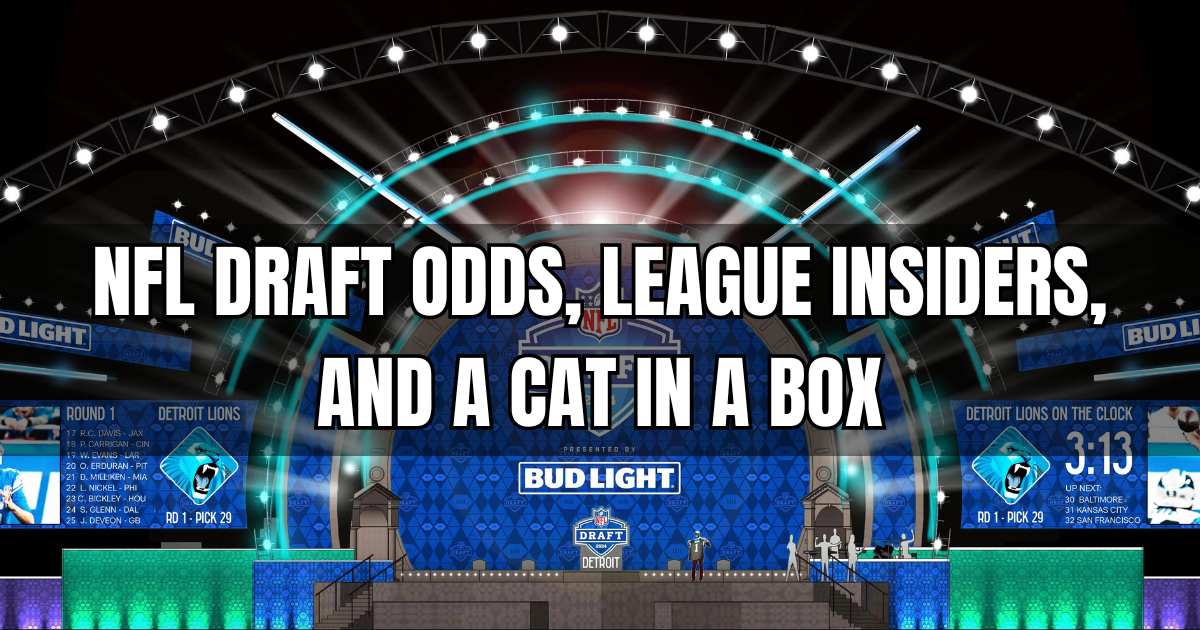The conflicts of interest that exist from merging media/content platforms with sports betting operations has come under the microscope, again.
As a quick refresher. In the 2023 NBA draft, NBA insider and FanDuel Partner, Shams Charania, posted a tweet (accompanied by a press run that included ESPN’s The Pat McAfee Show) that coincided with a massive swing of the betting markets he was reporting about. Charania, known for his insider scoops, reported that G League Ignite star Scoot Henderson was “gaining serious momentum” to become the No. 2 pick for the Charlotte Hornets. The odds, specifically at FanDuel, had shifted dramatically in lock step with Charania’s tweet. However, when the draft unfolded, Henderson was not selected second, leaving many bettors feeling burned by Charania’s purported insider information, and raising questions about the integrity of sports reporting in the age of legalized sports betting.
Fast forward to the 2024 NFL draft, where ESPN’s Adam Schefter found himself involved in a similar controversy and was having none of it. The discussion revolved around the Chargers selecting a quarterback with their first pick. Throughout the week, the odds of this happening on ESPN BET shifted towards the Chargers actually doing so, despite Schefter—a seasoned insider—publicly stating on ESPN, “You’d be absorbing the largest cap charge in NFL history to trade one of the elite young quarterback talents. It doesn’t make sense for as much as you would get back. And I don’t understand how those odds have gone up like that. Is this some sort of gimmick?”
Here’s the movement of odds timeline:
- Prior to Tuesday: 100-1 (+10,000)
- Tuesday (4/23): 15-1 (+1,500)
- Thursday (Draft Day – 4/25): 6-1 (+600)
For those less familiar with sports betting, this means at the start of the week, $10 wagered would result in winning $1,000. By draft day, $10 wagered would result in winning $60. Viewed from a different angle, at the start of the week the implied chance of winning is less than 1%. By draft day, the implied chance of winning is greater than 14%.
Without going into too much jargon about how a market can be manipulated (appropriately or inappropriately), the key idea is to have as many levers as possible, with the two critical ones being money supply and rate. It is typically believed that the public and dollars are what drive the betting markets, setting and adjusting odds and lines. Without some transparency here, there is no evidence that supports money supply (i.e. a big bet on a favorable outcome) as the leading indicator to this swing in odds.
Schefter made this clear on his own network, ESPN, when he questioned the legitimacy of odds suggesting that the Los Angeles Chargers would trade up to select a quarterback, despite already having their franchise quarterback in Justin Herbert. Schefter’s skepticism struck a chord with fans who viewed ESPN’s promotion of these odds as a thinly veiled attempt to manipulate bettors. The backlash was swift, with many questioning ESPN’s motives and some even suggesting that the odds were part of a larger money laundering scheme.
ESPN’s subsequent deletion of articles and video evidence related to Schefter’s comments only adds fuel to the fire, raising questions about transparency, integrity, and independent validation, specifically at the mesh point of media/content and sports betting. “Just trust us” has seemingly started to run its course.
The “so what” of it all harkens back to Schrödinger’s Cat thought experiment from the 1930’s. In the 1930’s, Erwin Schrödinger conducted a thought experiment to highlight the paradox of quantum mechanics. Originally a critique of the field of study’s prevailing interpretation (put forward by Einstein). In its simplest form, Schrödinger envisioned a scenario where a cat, a container of poison, a monitoring device, and a radioactive source are all inside a sealed, opaque box. If the monitoring device detects radioactivity, it triggers and breaks the poison container, killing the cat.
In this experiment, without observation, the cat exists in a state where it is both alive AND dead simultaneously. However, when someone looks inside the box, the cat is either alive OR dead, not in both states at the same time, something of an impossibility. Aside from those calling for “these [sportsbook] people to go to jail” in the comments on twitter, no one is suggesting the “cat” is alive or dead because there is not yet regulation that enables observation. But it’s coming. No one is technically speeding unless a limit is set and enforced. Until such time though, all possibilities must exist…

